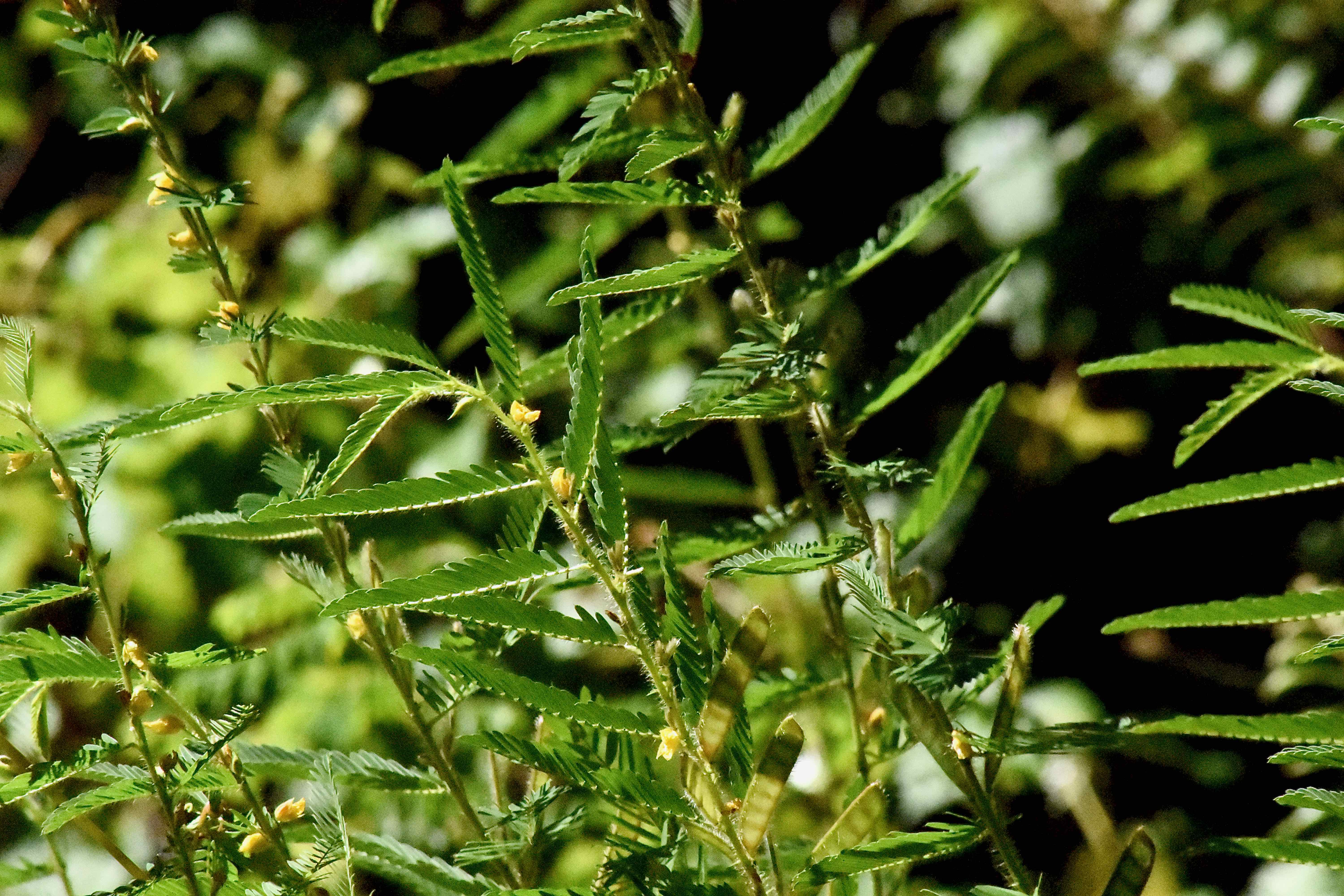
Hairy sensitive pea, photographed at Yamato Scrub, Boca Raton, Palm Beach County, in August 2016.
There's an old saying that there is defense in numbers. Hairy sensitive pea, Chamaecrista nictitans, is a plant that apparently has taken it to heart, if a plant can be said to take anything to heart.
Hairy sensitive pea, so-called because of how the plant reacts when its leaves are touched, is a lesser known and considerably less showy cousin to the partridge pea. Its small, demure flowers produce nectar, of course, but it also produces the sweet stuff through glands called nectaries, which tend to attract ants and parasitic wasps that attack plant-eating insects and unintentionally protect hairy sensitive pea.
While there is some evidence that this doesn't help an isolated plant much, researchers have found that it does reduce the number of herbivores when hairy pod sensitive pea occurs in large patches. Defense in numbers.
Hairy sensitive pea is a Florida native found throughout most of the state and almost the entire Peninsula. The United States Department of Agriculture has conflicting information about the plant's native range outside of Florida, limiting it to the southeastern United States, as in the map below, but in other sources expanding it to include much of the eastern half of the country.
It's also native to Mexico, Central America, South America and parts of the Caribbean. It's been introduced to warmer parts of Asia as fodder for cattle, and it's made its way to the Pacific, where it's considered an invasive plant on some islands.
It gets its common name from the obvious fact that it is indeed hairy, and the less obvious fact that its leaves will close up when touched. It is, as noted above, a close cousin of the seemingly ubiquitous partridge pea but the two plants are easy to tell apart.
Hairy sensitive pea is smaller, more compact and more upright, about 20 inches tall. The flowers are similar in color and shape to a degree, but hairy sensitive pea is much smaller and lacks the flash of its cousin. It has red and green seed pods and compound leaves, that, as noted, fold when touched. The leaves of partridge pea don't do that. It likes sandy soils in open sites, and blooms March through September. Habitats include disturbed sites, savanas and open woodlands. It tends to die off in places as the tree canopy develops.
It is a legume, meaning it fixes nitrogen to the soil. It grows slowly and might be somewhat toxic, according to the USDA, but it's still used as forage for cattle in parts of the world where the soil isn't the best. Mourning doves, meadow larks, turkeys and bobwhite dine on the seeds. The little sulphur and cloudless sulphur butterflies use hairy sensitve pea as a host plant. The Cherokee used it to make a medicine to treat spasms in infants.
Hairy sensitive pea is a member of Fabaceae, the family of peas and beans. Other common names: small partridge pea, hairy partridge pea and wild sensitive plant.
Yamato Scrub Natural Area
Photo Gallery — Click on photo for larger image
U.S. Department of Agriculture Distribution Maps






